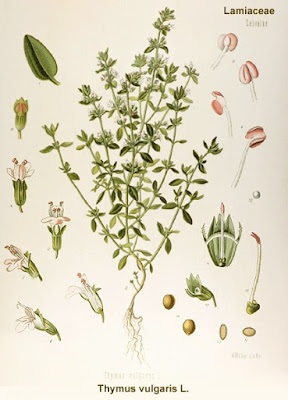Ik waad langs de rivier door weelderig watermunt. De geur, herinnering aan gisteren. Verjaardagsgeur van vroeger, ook vandaag ben ik jarig en nog wel 76 jaar. Hoe is het mogelijk zo oud en groot te zijn en je toch kind en klein te voelen.
De frisse, opwekkende maar tezelfdertijd weemoedige, oude geur van watermunt vertolkt mijn gevoel van dit moment. Coronavrij maar toch gebonden door Corona. De wereld is een legende geworden. Net zoals het verhaal over munt, Volgens sommigen zou de naam Munt en Mentha afgeleid zijn van Minthe, de nymf van waters, bossen en bergen. Deze sage van Ovidius luidt dat de dochter van de watergod Cocytus, Menthe of Minthe geheten, door Hades de god van de onderwereld bemind werd, maar door zijn jaloerse echtgenote Persephone in deze plant veranderd werd.
Volgens anderen zou de naam afkomstig zijn van minthos, waarmede de Grieken iets sterk ruikend aanduiden. Bij de Grieken werd de Munt als een heilig kruid beschouwd en men gaf de doden een bosje munt mee in het graf. Dit gebruik moet wel zeer oud zijn, want in Oudegyptische graven uit 1200-600 vooronze jaartelling treft men reeds dergelijke bundeltjes aan.
De smaak van watermunt is sterk, minder pepermuntig maar wel heel kruidig en je proef behalve een munt smaak ook iets zoets en hartigs. Daarom is deze munt ook heel geschikt voor hartige gerechten. In sausen, pesto en kruidenboter te gebruiken. Bij roerbak gerechten niet meebakken maar fijngesneden er overheen strooien en in couscous!
Ik verzamel wat blad van de watermunt om te drogen. Vers blad en bloem kan ook in salade. Hele toppen kunnen in een koude waterdrank. De drogerij van watermunt kan je later gebruiken als muntthee, aftreksels voor geneeskrachtige doeleinden of in het eten. De Engelse maken er de bekende mintsauce van die bij vet vlees wordt geserveerd. En dat is niet voor niets natuurlijk, het helpt de spijsvertering een handje.
Enkele recepten
Munttapenade
* 3 handen vol watermunt
* 1 handvol in stukjes gehakt (oud) brood
* scheut olijfolie
* peper en zout
* mosterd
* rode-wijnazijn
Hak de munt fijn en roer het door het brood. Roer er zoveel olijfolie door tot het geheel smeuïg is. Breng op smaak met peper en zout, mosterd en azijn. De saus komt beter op smaak als die een tijdje staat.
Tzatziki
* 1 komkommer
* 2 knoflooktenen
* 3 deciliter yoghurt
* 2 eetlepels olijfolie
* 2 eetlepels fijngehakte (water)munt
* peper en zout
Rasp de komkommer fijn, bestrooi met zout en laat zo’n 20 minuten uitlekken in een vergiet. Pel en snipper de knoflook. Meng de yoghurt met de knoflook, uitgelekte komkommer, olie en munt en breng op smaak met peper en zout.
En ja, er is best wel wat wetenschappelijke info over watermunt
López, V.; Martín, S.; Gómez-serranillos, M.P.; Carretero, M.E.; Jäger, A.K.; Calvo, M.I. Neuroprotective and Neurochemical Properties of Mint Extracts. Phytother. Res. 2010, 874, 869–874. [
Google Scholar]
lsen, H.T.; Stafford, G.I.; Van Staden, J.; Christensen, S.B.; Anna, K.J. Isolation of the MAO-inhibitor naringenin from Mentha aquatica L. J. Ethnopharmacol. 2008, 117, 500–502. [
Google Scholar] [
CrossRef]
Conforti, F.; Ioele, G.; Statti, G.A.; Marrelli, M.; Ragno, G.; Menichini, F. Antiproliferative activity against human tumor cell lines and toxicity test on Mediterranean dietary plants. Food Chem. Toxicol. 2008, 46, 3325–3332. [
Google Scholar] [
CrossRef]
Senatore F, D'Alessio A, Formisano C, et al. (2005) Chemical composition and antibacterial activity of the essential oil of a 1,8-Cineole chemotype of Mentha aquatica L. growing Wild in Turkey. J Essent Oil Bear Plants 8: 148-153.
Esmaeili A, Rustaiyan A, Masoudi S, et al. (2006) Composition of the Essential Oils of Mentha aquatica L. and Nepeta meyeri Benth. from Iran. J Essent Oil Res 18: 263-265.
Voirin B, Bayet C, Faurec O, et al. (1999) Free flavonoid aglycones as markers of parentage in Mentha aquatica, M. citrata, M. spicata and M. piperita. Phytochem 50: 1189-1193.
Olsen HT, Stafford GI, Van Staden J, et al. (2008) Isolation of the MAO-inhibitor naringenin from Mentha aquatica L. J Ethnopharmacol 117: 500-502.

Mentha aquatica L. (water mint) is a perennial herbaceous plant belonging to the Lamiaceae family. Its name derives from the union of the greek term indicating the genus (Mentha) and of the latin word referring to the species habitat (aquatica). The species is characterized by an ascending stem which is fully hairy and branched. The leaves are short and opposite two by two with an oblong oval shape. The flowers are tiny, densely crowded forming a terminal hemispherical inflorescence, odorous and hermaphrodite with a color ranging from pink to violet. These bloom from June to October. Lastly, the fruit is formed by four oval nuculae with a warty surface. The phenotype with white flowers present the same morphologic characters.
This is a typical European-Asiatic species even if with some extensions to Northern Africa and America. In Italy, it can be found everywhere along the national territory where it grows along hydrous places like rivers, lakes and swamps but also in meadows and woods till the altitude of 1200 m a.s.l. As well as other Mentha species, M. aquatica hybridizes with other Mentha species generating several known hybrids such as Mentha × piperita, Mentha × suavis and Mentha × smithiana [2].
Ethno-pharmacological uses of the genus
In literature, there is no specific use about this species but, in general, the plants of this genus have been employed in many different fields and, in some cases, are still used. In particular, these uses were: pharmaceutics as a flavor corrective of some drugs and as herbal medicine for their analgesic, antigenotoxic, spasmolytic, antibacterial and astringent properties; cosmetics as a component of fragrances, creams and soaps ]; nutrition as a condiment, in the preparation of confectioneries and salads and as a flavoring of beverages and sweets.



































